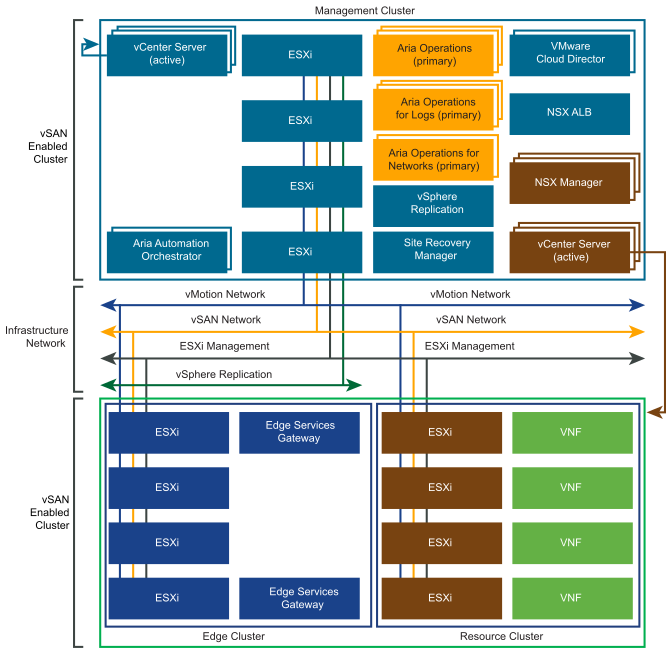The network topology consists of various network segments. These network segments are primarily divided into infrastructure networks and tenant networks.
The network traffic includes VMkernel traffic such as vSphere vMotion traffic, vSAN traffic, vSphere Replication traffic, and ESXi host management traffic. Tenant networks (physical VLAN networks) such as Management VLAN connect the management Virtual Machines (VMs) to the hypervisor.
All ESXi hosts are configured with VMware vSphere® Distributed Switch™ (VDS) devices, which provide consistent network configuration across multiple hosts. The hypervisor VMkernel networks are configured on an infrastructure VDS, and the tenant networks are configured on a tenant VDS on each of the ESXi hosts.
Infrastructure Networks
Each ESXi host has multiple VMkernel port groups configured for each infrastructure network. The infrastructure networks are as follows:
vMotion Network for the vSphere vMotion traffic
vSAN Network for the vSAN shared storage traffic
ESXi Management for the ESXi host management traffic
vSphere Replication Network for communication between hosts at the protected and recovery sites
Tenant Networks
Management vCenter Server: Tenant networks (VLAN-backed) interconnect the VMs of the Telco Cloud Infrastructure components. These networks are configured on a dedicated tenant VDS in each of the pods.
Resource vCenter Server: VNF Network is used for VNF-to-VNF communication.
Management, Edge, and Resource Pods
The Telco Cloud Infrastructure platform contains a Management pod, a Resource pod, and an Edge pod. Separate vCenter Server instances are used to manage the Management, Resource, and Edge pods. NSX Advanced Load Balancer(AVI) provides load balancing to VMware Cloud Director cells.
